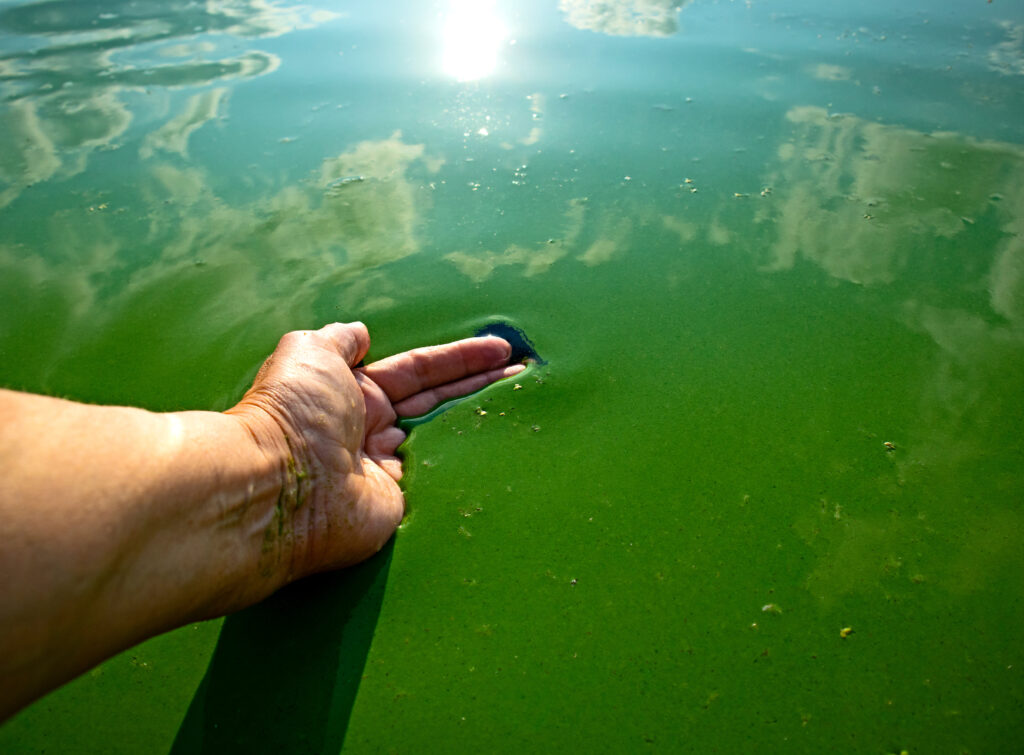Jul 01, 2024

Blue-green algae technically are bacteria found in bodies of stagnant fresh water. This includes lakes, ponds, and even fountains or birdbaths. Blue-green algae thrive in warm, dry weather, and so summer and early fall in Colorado provide the perfect conditions for their growth. Rapid proliferation is known as a blue-green algae “bloom.” Officially known as cyanobacteria, blue-green algae may produce toxins (poison) that are life-threatening to dogs, humans, and wildlife.
Blue-green algal blooms can look like someone spilled pea soup or neon green paint right into the body of water. Sometimes the color is more blue-green or reddish brown. Having lost its transparency, contaminated water may appear foamy, slimy, or smell rotten.
Not all species of blue-green algae produce toxins; in fact, most do not. Unfortunately, it is impossible to distinguish harmful from harmless blooms based on appearance. Therefore, it’s safest to assume that all blooms have the potential to be poisonous. We do know the most hazardous toxins, microcystin and anatoxin, cause liver and nervous system injury. Other toxins may cause gastrointestinal damage or skin irritation. Dogs are susceptible to serious illness if they drink or swim in water containing these toxins.
Dogs are particularly susceptible to blue-green algae poisoning. They are less likely to be deterred from drinking contaminated water, and they inadvertently ingest more water while swimming in it. Dogs may also lick their haircoats after a contaminated swim.
Clinical signs can develop minutes after exposure, or they may not appear for hours. Symptoms of blue-green algae exposure include:
Your vet may diagnose blue-green algae poisoning based on signs your pet is showing and on a history of exposure to potentially contaminated water. Blood testing will likely be recommended to look for signs of organ injury. The water source itself may be tested to confirm a diagnosis.
It is critical to begin treatment as soon as possible after exposure. Sadly, there is no specific antidote for blue-green algae poisoning. Instead, treatment involves overnight hospitalization for intensive, supportive care.
Treatments may include:
The toxins from blue-green algae that affect the liver or brain can be deadly within hours. Even with early, aggressive treatment, survival is not guaranteed. If the pet survives, long term liver damage is possible. With such a grave prognosis, prevention is key.